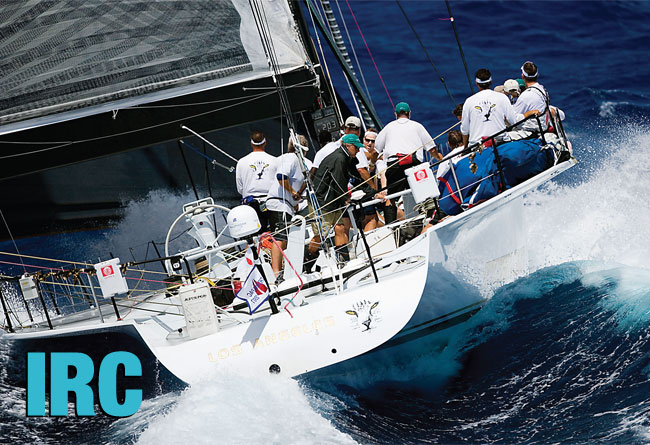
The rating manager’s dilemma: open the door to a small, seemingly harmless feature such as small topside hollows and you can be guaranteed someone, somewhere will test the edges – this is the Reichel-Pugh 86 Pyewacket after Juan K got to work remodelling her. If something as costly as a hull ‘tweak’ is perceived as even mildly advantageous then the damage to the wider fleet may be disastrous
At the start of the New Year I found myself sitting in a meeting with a group of builders and designers talking about the Volvo Ocean 65 project, when the screen saver flicked to a beautiful photo of the Judel-Vrolijk IRC yacht Jethou as she looked soon after launch. This seemed to provide a fitting distraction from the topic of the time and I was soon asked why IRC doesn’t encourage the shallow topside hollows seen then on Jethou – as she was – and which several present clearly found attractive.
I found it interesting that the initial understanding around the table was that this was probably just an issue of aesthetic taste by the rating office. I explained that in fact it all stems back to the philosophy behind IRC, and has nothing to do with any personal opinions but revolves around a standard set of questions that we regularly ask ourselves; in particular IRC rule 2.4, which simply states ‘IRC discourages unnecessary expense at all levels’.
Quoting this rule to my audience produced blank faces all around. No great surprise, as all were looking at Jethou and asking ‘where is the expense in building concavity into the hull of a one-off IRC mini-maxi?’ However, the important words here are ‘at all levels’.
At this stage we again ask ourselves another important question: ‘Why is this design characteristic being suggested or integrated into a design?’ It is rare that the answer is to slow the boat down. In this case I am sure that there is an element of aesthetics, but there is also the fact that when the crew weight is most needed, this slight hollow allows them to get that bit further out without increasing the wetted surface on the leeward side as much as would fuller aft sections.
By now I was getting suspicious looks as everyone asked themselves ‘how much advantage really is there with such a slight hollow?’ This again takes me back to those words… ‘at all levels’.
We invite you to read on and find out for yourself why Seahorse is the most highly-rated source in the world for anyone who is serious about their racing.
To read on simply SIGN up NOW
Take advantage of our very best subscription offer or order a single copy of this issue of Seahorse.
Online at:
www.seahorse.co.uk/shop and use the code TECH20
Or for iPad simply download the Seahorse App at the iTunes store


